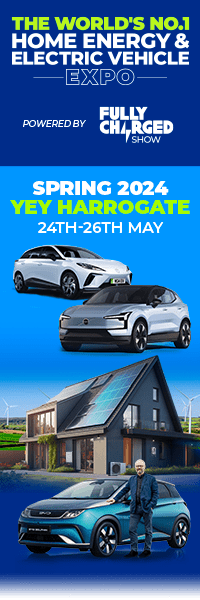
A survey conducted by elmo and Fully Charged reveals that 75% of people could conveniently drive an electric car...
Electric cars are on the rise and more and more people are considering one as their next car purchase. But barriers still remain and not everyone is convinced.
At elmo, we built our EV Suitability Tool in partnership with Fully Charged to help people understand whether an electric car could fit their lifestyle (by saving them money and not wasting their time).
The tool has been out in the internet wilderness since 21 st November. We’ve been overwhelmed with the number of responses! It’s so encouraging to see that this is something people are genuinely interested in.
So, thanks to everyone who has already taken the questionnaire! And extra thanks to those who provided feedback.
If you want to try out the tool for yourself, here’s the link: www.elmodrive.com/questionnaire
The results so far have been eye-opening, and we want to share them with you…
Highlights
- The majority of people are suitable for an EV and would save money while reducing tailpipe emissions
- 75% of people could conveniently drive all but the shortest-range vehicles (<100 miles)
- The average driver would save £1000 per year on fuel by switching to electric
- And would reduce their carbon emissions by 5 tonnes a year (the UK average per person is around 15 tonnes a year (CCC Report 2016))
Saving Money and the Planet
Based on our results, this is what a year in the life of an average respondent looks like:
- Just under 15,000 miles driven
- 1,500 litres of fuel saved by going electric
- Reducing overall emissions by 5 tonnes of CO2
- And resulting in £1,000 in possible fuel savings
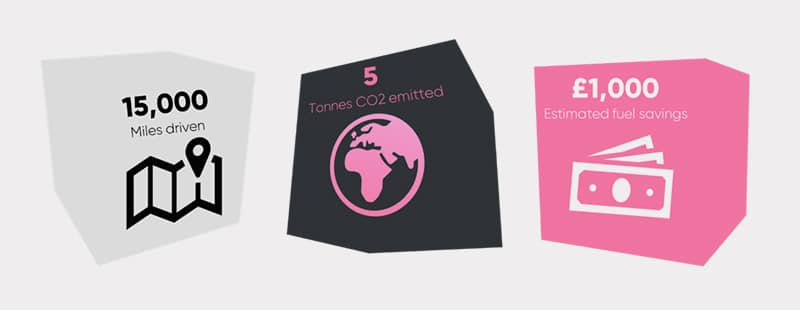
When we total this for the first 2500 people who used the tool, the positive impact a wide-scale switch to electric vehicles could have each year begins to become clear.
- 36 million miles driven
- 3.5 million litres of fuel saved
- Reducing overall emissions by 11,000 tonnes of CO2
- And resulting in possible fuel savings of nearly £2.5 million
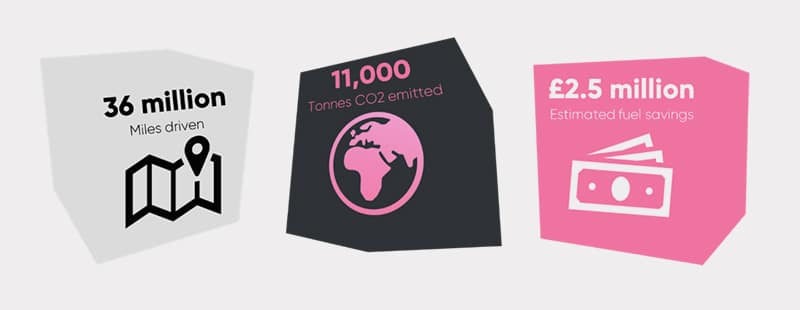
A Convenient Truth
We understand that cost savings and environmental advantages aren’t always enough to convince most people of their suitability for driving an electric car.
People want to be sure that they are not going to waste time and energy charging the car.
For our questionnaire results, we categorised peoples’ suitability based on their access to private charging (home access, work access, no access) and their maximum mileage on an average day (excluding any exceptional longer trips).
Here’s a brief guide to how we classified people:
- Great (66% of responses) = access to home charging and drive under 80 miles on an average day.
- Good (8% of responses) = access to home charging and drive a maximum of 120 miles on an average day; or access to work charging and drive a maximum of 80 miles on an average day.
- Okay (11% of responses) = access to home charging and drive under 180 miles on an average day; or access to work charging and drive less than 120 miles on an average day.
- Poor (15% of responses) = No access to home or work charging.
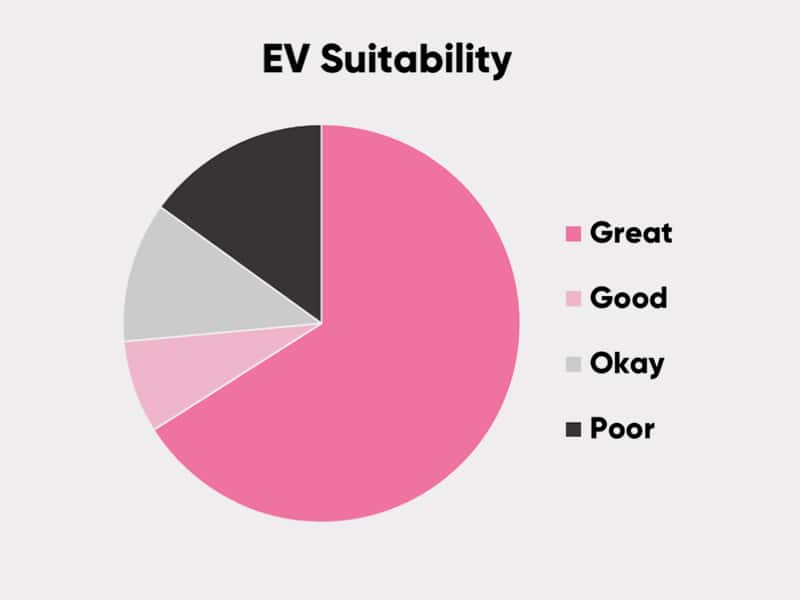
So, by our estimation nearly 75% of people who have used the tool are suitable for an EV!
How we really drive…
Our results show that the average person doesn’t actually drive very far on an average day. On an average weekday, 75% people drive less than 65 miles a day.
While on an average weekend, 75% of people drive less than 60 miles a day.
Overall, 50% of people don’t tend to drive over 60 miles a day and 75% of people don’t tend to drive over 105 miles a day.
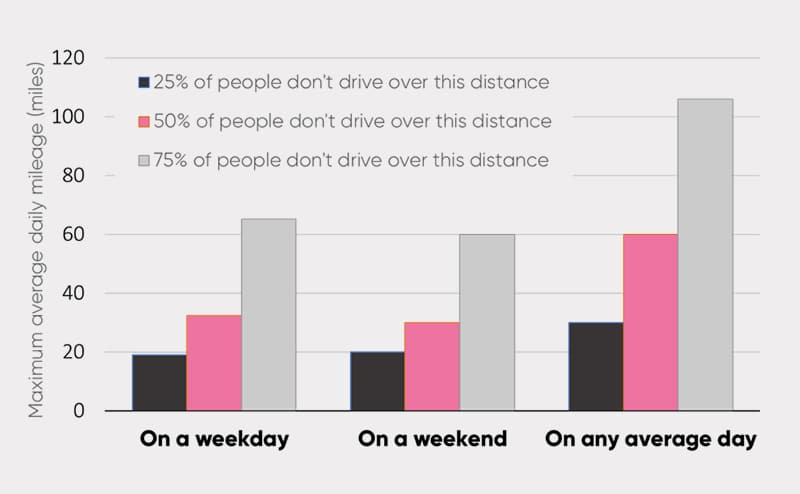
These average daily mileages are significantly lower than people report anecdotally.
‘Range anxiety’, it seems, is an overstated issue as people tend to overestimate their average daily mileage when asked to guess.
What’s encouraging with this discovery is that the electric car models currently on the market easily cater for the range requirements of the average person…
The Electric Cars
The lowliest 24kwh Nissan Leaf will serve the average daily needs of those 50% of people who don’t tend to drive over 60 miles a day. While anything with a battery over 30kwh will do nicely for the 75% of people who tend to drive under 105 miles on an average day.
The graph below shows the ‘Real World’ ranges and prices of different makes and models of electric cars and compares this to the ranges that 25%, 50% and 75% of you would need to carry out your normal weekly driving.
All of them have ranges above the dark grey and light grey zones which mark the range 50% of you would require for your average weekly driving (60 miles a day).
And the majority have ranges above the pink zone which marks 105 miles a day – the maximum daily requirement for 75% of people.
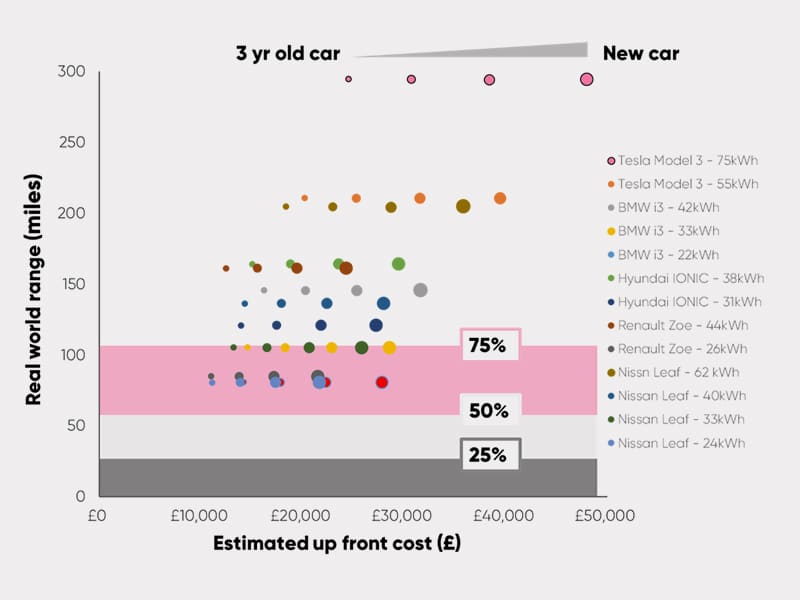
But what about less regular longer trips?
The picture does become less convenient when we factor in the longer, irregular trips which we all take from time to time.
This is, of course, when range can have a significant effect on the convenience of the drive!
We asked people to list three longer, irregular trips and indicate how often they made them each year. There was obviously a huge variation in responses, but to give a snapshot, the averages look like this:
- The shortest trip was 90 miles and took place 6 times a year
- The medium trip was 135 miles and took place 5 times a year
- The longest trip was 215 miles and took place only 3 times a year
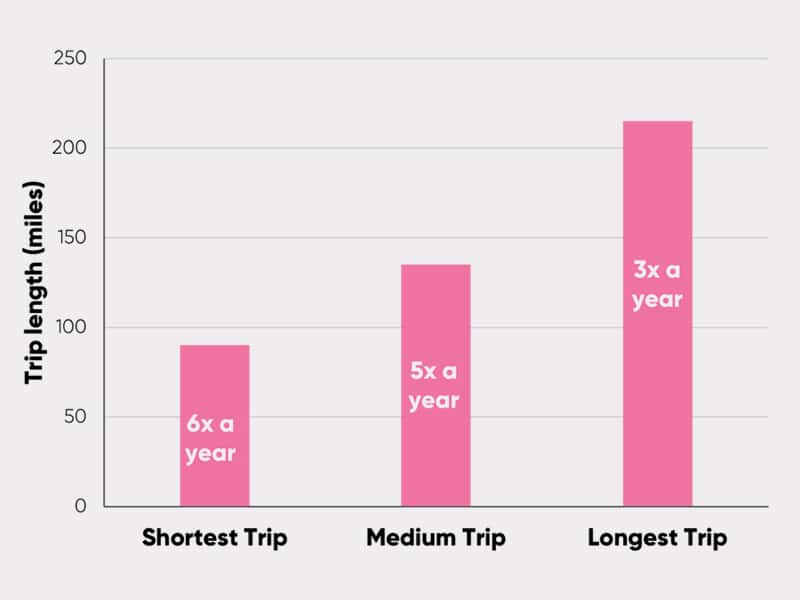
For each respondent, our results page maps how many times they will have to use public charging for each of their trips according to their vehicle choice.
For the driver, it is then a question of choosing a car to suit their individual requirements.
Our averaged results show as follows:
- Shortest trip: All but the shortest-range vehicles will cover the outbound leg on a single charge. Newer vehicles will be able to cover both legs in one charge.
- Medium trip: Newer vehicles should cover the outbound journey, but older cars will likely need to use public charging at least once along the way. To cover the return trip without charging in between, you would need one of the longest-range vehicles the market currently offers (e.g. Tesla Model 3 – 75kWh).
- Long trip: Public charging will be inevitable with all but the longest-range vehicles for a single leg and for all vehicles if a return trip is needed.
Take a look at these trips (one way (in candy pink) & return (in grey)) versus the real-world ranges (in blue) of a selection of market leading EVs below:
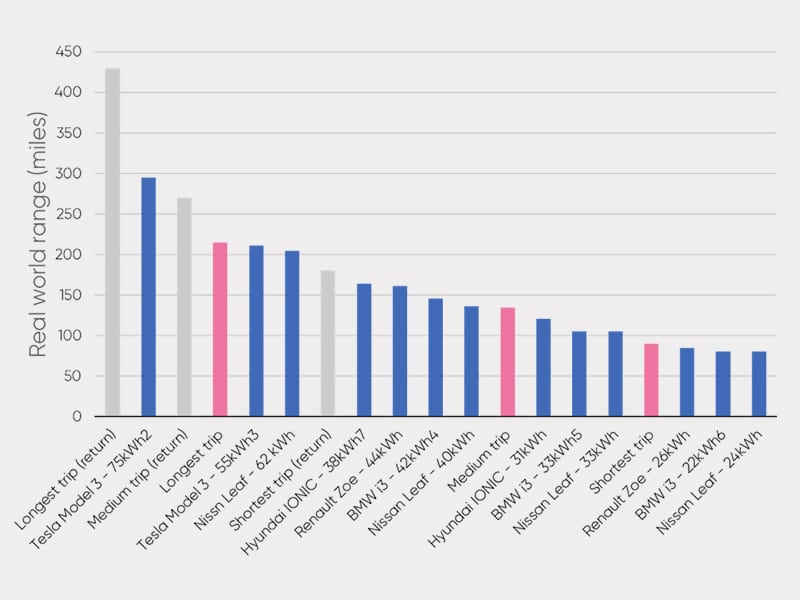
What’s so bad about public charging?
We’ve been talking about public charging as if it’s an absurd inconvenience to be avoided at all costs.
In reality, we are all used to stopping for petrol/diesel. And public charging will only get easier as the infrastructure improves. On top of the rapid growth in the number of charge points, we also expect solutions to emerge in the very near future which will give drivers the ability to charge conveniently at all public charge points.
Recap – what we’ve learned:
- While EVs are still not suitable for everyone, they would work well for the majority of people.
- The real barrier for people is not range and access to public charging, but the preconceptions people have about what they need.
- As new, improved models come onto the market and charging infrastructure continues to expand rapidly, peoples’ concerns will be continually eroded.
- EVs do have higher upfront costs, but the fuel cost savings are significant. New business models like subscriptions will allow drivers to benefit from running cost savings from the first day of driving by removing the upfront cost and the hidden costs associated with vehicle upkeep.
It’s important to note that, while our results indicate that electric cars can work well for the average person, there is still a long way to go before electric car driving is a good fit for everyone.
We know that many people feel underserved by the electric car industry in its current form (drivers who need to tow – we feel your pain!), but it’s encouraging and so important that, at this early stage, the market is providing for the average person.
If you haven’t already, don’t forget to try out the tool for yourself! Here’s the link: www.elmodrive.com/questionnaire

About the author
Olly is the co-founder of electric car subscription service elmo and wants to help as many people as possible to drive an electric car as soon as possible. He also hosts a podcast on entrepreneurship and sustainability called The Startup Microdose Podcast. He drives a 2nd gen Nissan Leaf. You can connect with him on LinkedIn and Twitter.
Read the entire blog as published.
